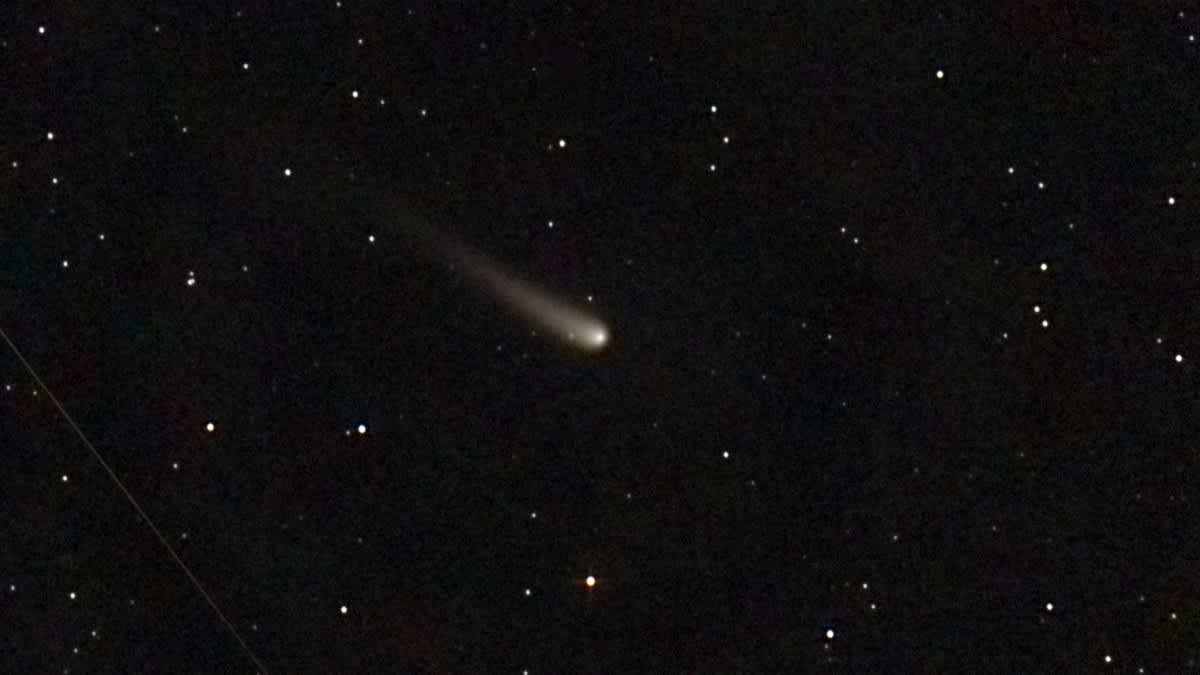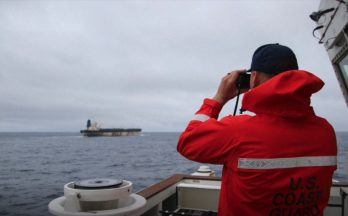By Suzanne Elliott, deputy content editor
A rare and bright comet last seen from Earth about 80,000 years ago will be visible from the UK this weekend.
The Comet A3 (Tsuchinshan-ATLAS) will make its closest approach to the Northern Hemisphere on Saturday, when it offers stargazers the best chance to see it with the naked eye.
Although it will be visible for about two weeks from Friday night when it zooms within 44 million miles (71 million kilometres) from Earth, the best view is likely to be on October 12.
With a 80,000-year orbit, the comet would have last been seen when our closest ancient human relatives walked the planet.
Where and how can you see Comet A3 (Tsuchinshan-ATLAS) over British skies
Dr Robert Massey, deputy executive director at the Royal Astronomical Society, said the comet was photographed in British skies in September “but was too low to see with the eye”.
This latest flyby came at “quite a time, given the aurora last night and the prospect of a bright comet”, he said.
The comet will be visible in the west after sunset, Dr Massey said. It will appear higher each night over the next few weeks before fading.
Dr Massey suggests finding a dark place away from street lamps to get the best view.

Apps like Stellarium can help you locate the best spot to see the comet, Dr Massey advises.
“Look in the west after sunset, and be prepared to sweep along the horizon with a pair of binoculars.”
“So far observations by experienced comet observers suggest it’s as bright as expected, which is a good sign, so we can be reasonably optimistic about it being a good sight.”
Dr Massey’s tips on getting the best view of Comet A3 (Tsuchinshan-ATLAS):
- As with all night time astronomy, it’s good to get away from streetlights.
- The time to look is just after sunset
- Be somewhere with a good uncluttered western horizon (no high buildings, hills or trees).
- Binoculars are a good idea, to find it initially and then see if it’s visible by eye.
Can I see it with the naked eye? There is a chance the comet may be visible to the naked eye, although you stand a better chance of seeing it through a pair of binoculars, Dr Massey told ITV News.
Several comets are discovered every year, but many burn up near the sun or linger too far away to be visible without special equipment. After its Earth flyby, the comet will head once again toward the solar system’s outer fringes.
What are the best conditions to get the clearest view of the comet?
“You need a clear sky, fairly obviously,” says Dr Massey.
“Over the next week the Moon will wax (grow towards Full), and its light will interfere a bit. But in twilight that’s probably less important.”What is a comet?
Comets are frozen debris from the solar system’s formation billions of years ago. They heat up as they head towards the sun which is what causes their characteristic tails.
In 2023, a green comet that last visited Earth 50,000 years ago was able to be seen from Earth. Other notable flybys included Neowise in 2020, and Hale-Bopp and Hyakutake in the mid to late 1990s.
What is the Comet A3 (Tsuchinshan-ATLAS)?
The comet, also designated C/2023 A3, was discovered in 2023 and is named after the observatories in China and South Africa that spotted it.
Follow STV News on WhatsApp
Scan the QR code on your mobile device for all the latest news from around the country






























